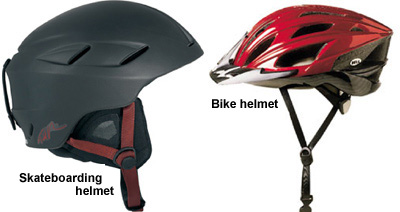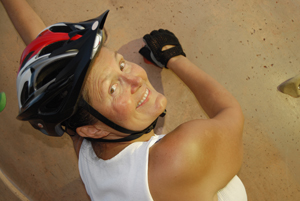- There is no “right” age for wearing a helmet. Everyone from small children to seniors has good reason to wear head protection.
- Helmets are designed to absorb the shock of a fall or blow, and to protect the head and brain from injuries.
- When choosing a helmet, be sure that it fits properly. Every sport requires a specific type that’s designed to provide the best possible protection.
 Wearing a helmet can reduce the risk and seriousness of a head injury or cranial trauma by 60%.
Wearing a helmet can reduce the risk and seriousness of a head injury or cranial trauma by 60%.
 When fitted properly, a helmet can be extremely comfortable and effective at protecting from injury.
When fitted properly, a helmet can be extremely comfortable and effective at protecting from injury.
The helmet should be snug and should not move around easily.
The FRONT PART of the helmet should cover your forehead and sit about the width of two fingers above your eyebrows.
The BACK should cover the prominent bump at the back of your head. Ski and snowboard helmets should not reach the back of the neck.
Place the SIDE STRAPS so that one part is in front of the ear and the other behind, joining right below the ear lobe.
Adjust the side straps prior to connecting the CHINSTRAP. The chinstrap should fit snugly, but should allow for two fingers to fit between it and your chin.
Once the straps are adjusted, RECHECK the fit of the helmet. It should not move around easily.
For children, choose a helmet that fits at the time of purchase. Children’s heads don’t grow as fast as the rest of their bodies, so don’t buy a helmet assuming they’ll grow into it.
